The Challenge
FHE is a leading designer and manufacturer of pressure control equipment for the oil and gas industry. The product development team was looking for a CAD data management solution that would allow multiple engineers to access and work on the same design at the same time while still providing real-time version control. The team wanted to eliminate the project delays experienced with its file-based Product Data Management (PDM) system that required serial workflows.
Results
- Onshape’s cloud Software-as-a-Service (SaaS) platform delivers anytime/anywhere CAD access for FHE’s global team.
- Real-time data management eliminates version control issues, significantly reducing the risk of costly manufacturing errors.
- Using Onshape Enterprise’s “Light User” subscriptions, FHE extends full CAD access to its dozens of suppliers at a fraction of the regular cost.
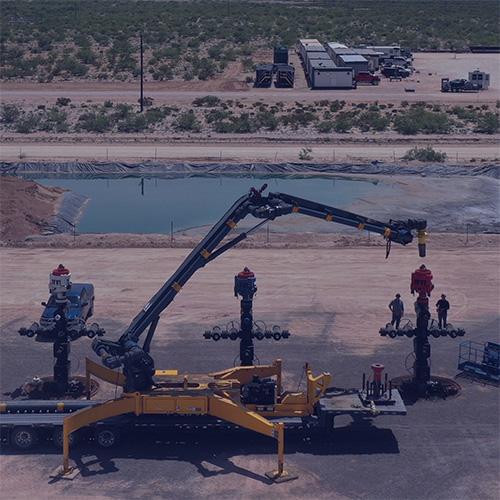


As a team leader, the fact that anyone on my team can work on their designs anytime without check-ins or check-outs fundamentally changed the game for us.’’
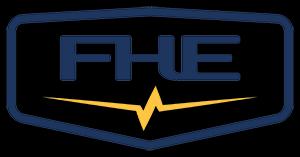
Although consumers have an insatiable appetite for fossil fuels for transportation and to heat their homes, few are aware of the human safety risks associated with extracting oil and gas from the ground.
According to the U.S. Department of Labor’s Occupational Safety and Health Administration (OSHA), three out of every five fatalities in the oil and gas extraction industry are the result of “struck-by,” “caught-in,” and “caught-between” hazards, including being hit by moving vehicles, falling equipment and high-pressure lines.
These risks are quite visible in the hydraulic fracturing (also known as “fracking”) industry, which injects a high-pressure mixture of water, sand and chemicals into the ground to force cracks in petroleum-bearing rock to produce greater oil or gas flows. In the traditional fracking set-up, elaborate labyrinths of iron pipes are connected from multiple wellheads to a fleet of tanker trucks and pressure pumping equipment. All the plumbing connections are done manually with a sledgehammer, placing workers at considerable risk of injury from bursting pipes or potential accidents with heavy equipment lowered to the site by crane.
Based in Colorado, FHE designs and manufactures pressure control equipment that makes hydraulic fracturing operations more efficient and safer for oil and gas workers. In 2015, the company introduced a first-in-the-industry product called the RigLock, a hydraulic wellhead connector that allows personnel to remotely link the well to the pressure control plumbing. With the specialized FHE equipment, workers can securely attach the wellhead connector, lowered by crane, from 100 feet away (see how the RigLock works in this video).
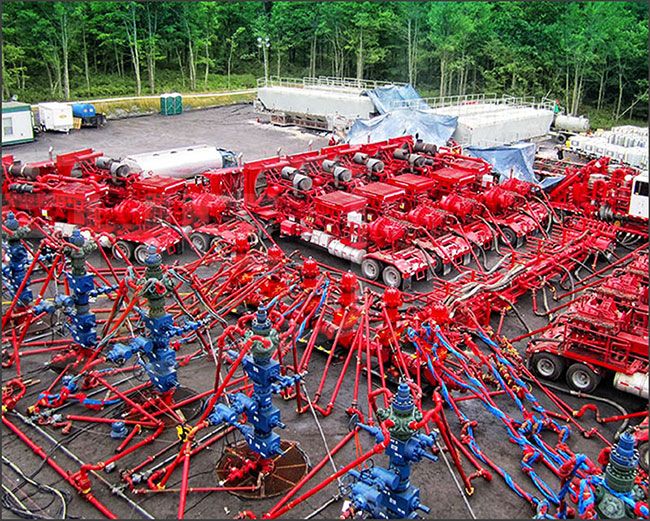
“This process used to involve lowering a worker in a man basket over the wellhead danger zone, called the ‘Red Zone,’ to make a hand connection,” explains Matthew Kibler, a senior mechanical designer for FHE. “There’s a significant amount of heavy equipment hanging and moving by crane, and there’s no real controls. So people were losing fingers and smashing limbs just from the regular human interaction with the equipment.”
“We like to think of ourselves as a safety company,” he adds. “You no longer need to put people in harm’s way.”
FHE’s latest innovation is the FracLock, an improved wellhead connector that is locked in position by a remotely controlled articulated arm that includes high-pressure plumbing built inside. The system, nicknamed “the Scorpion,” eliminates 85 percent of the iron pipes required in the traditional fracking setup.
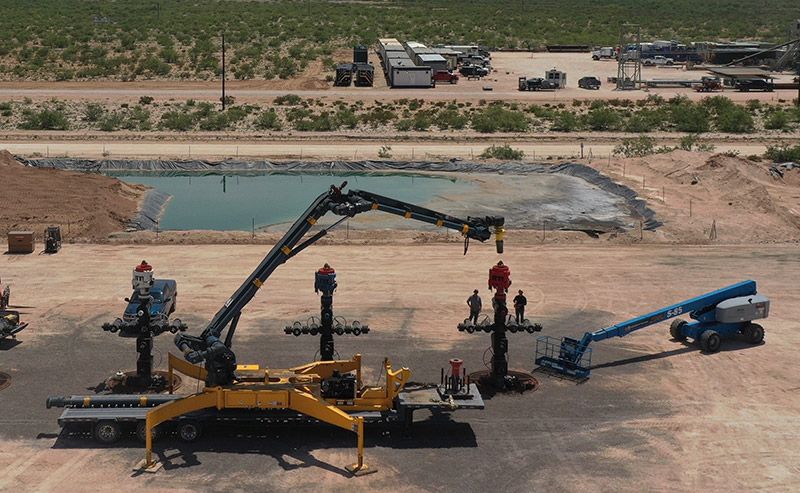
The 40-foot-tall articulated Scorpion arm rotates 360 degrees, reaches out over 40 feet from the radial center, and can quickly maneuver from wellhead to wellhead. The FHE system’s versatility maximizes operation time and increases productivity while removing additional injury hazards common to the industry.
Data Management: Searching for a PDM Alternative
To design and build its innovative FracLock system, FHE chose cloud-based Onshape, PTC’s SaaS product development platform that combines a robust CAD system with built-in data management and real-time collaboration tools.
Before beginning the FracLock design process in 2018, Kibler wanted to find a better data management solution for his growing team to replace their file-based Product Data Management (PDM) system. As head of the engineering team, he was frustrated by the inherent restrictions of PDM that block multiple people from simultaneously accessing and working on the same design file.
“I personally will be up quite frequently at 2 o’ clock in the morning. I’ll wake up and have an idea and want to design something on the CAD system,” says Kibler. “But when somebody else in your department has those files checked out, you can't go in and edit them. The only way is to make copies of them. If you make copies, then you've got to come back the next day and release ownership, overwrite files, release everything. It turns into a nightmare.”
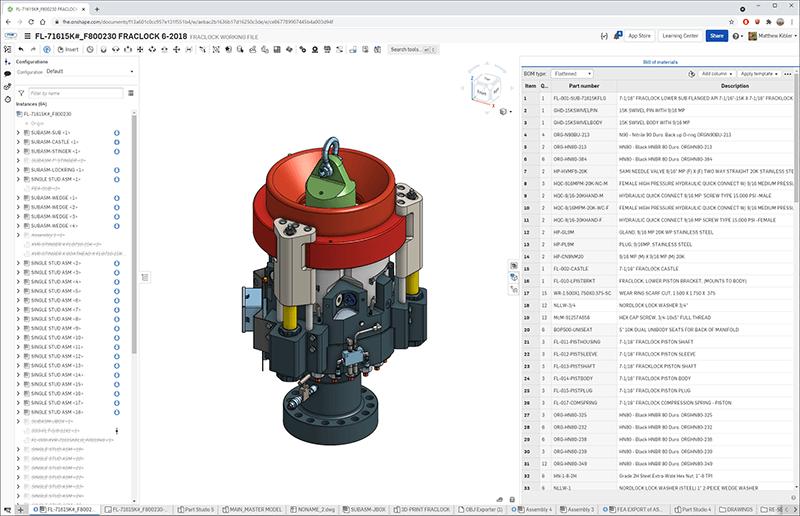
“I travel a lot, and trying to check in and check out files from a remote vault is time-prohibitive when you're trying to be very efficient,” he adds. “And so when I evaluated Onshape as a replacement to SOLIDWORKS, I tested how effective it was while I was working in different locations. And when I use Onshape from Canada or Florida or California or my office in Colorado, it just works seamlessly. As a team leader, the fact that anyone on my team can work on their designs anytime without check-ins or check-outs fundamentally changed the game for us.”
FHE has offices across the United States, in Kuwait and Abu Dhabi. Onshape’s real-time data management and collaboration tools ensure that every stakeholder around the world is always looking at the latest version of design. Whenever one team member makes a design change, everyone else on the team instantly sees it or receives a notification. A comprehensive Edit History tracks who made what change and when, allowing teams to revert to any prior stage of the design if desired.
Kibler says that the confidence that every core engineering team member and manufacturing partner is always looking at the latest design version in Onshape translates to tremendous savings on the shop floor.
“Making sure our vendors have the most up-to-date drawings provides immediate savings,” he says. “Anytime we get a manufacturing mistake, it could cost several thousand dollars. Making sure the vendors are on the latest revisions puts the onus on them and not on the purchase agent. I don’t even know how to begin to put an exact dollar amount on it, but the clarity that Onshape gives us in our communications with vendors is invaluable.”
Onshape’s “Light User” Access Enables Better Third-Party Collaboration and IP Security
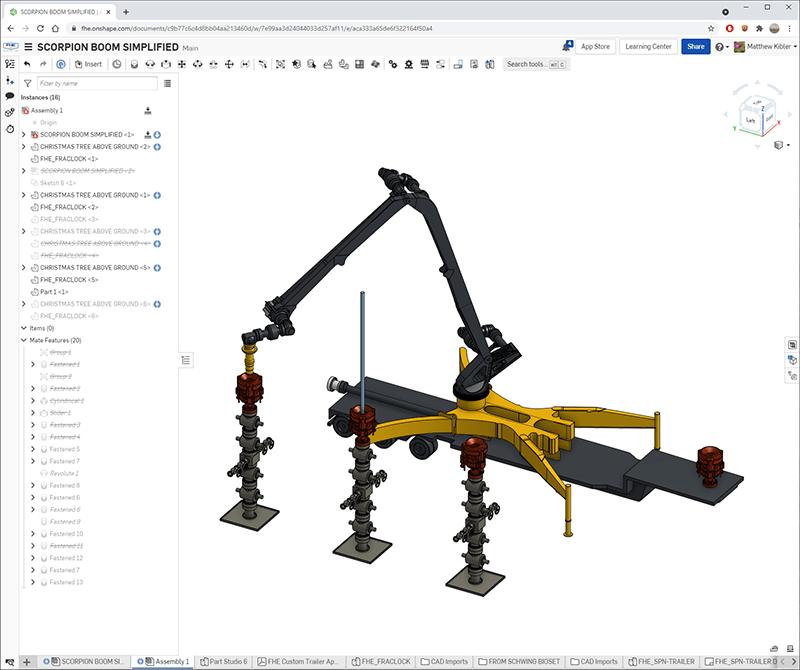
FHE’s product development team currently has 11 full-time Onshape users and 135 light users. Onshape’s Enterprise plan allows companies to purchase flexible and cost-efficient “light user” subscriptions for team members or external partners who only occasionally need to access the CAD model. FHE regards this business model as the most economical and effective way to collaborate with the dozens of vendors who manufacture parts for the RigLock and FracLock systems.
“We have lots and lots of vendors and very few designers,” notes Kibler. “It’s the opposite situation of most companies, which will have lots of engineers or designers and very few vendors. Onshape’s magic is that you can create a separate workspace to share with your vendor. They can export this workspace and then put the geometry into their CAM systems. All I have to do is email them the workspace link and as long as they have the right permissions, they can see our parts.”
Kibler adds that Onshape’s secure Sharing feature helps the company better protect their proprietary designs if a business relationship with a specific vendor ends.
“What happens if I don’t want a vendor to be able to see our part anymore? With Onshape, it’s as easy as going into the Document and deleting their permissions so they no longer have access. These type of share characteristics are absolutely imperative to the way that we manage communications with our many vendors,” he says.
Collaborative Design is Essential for Future Growth
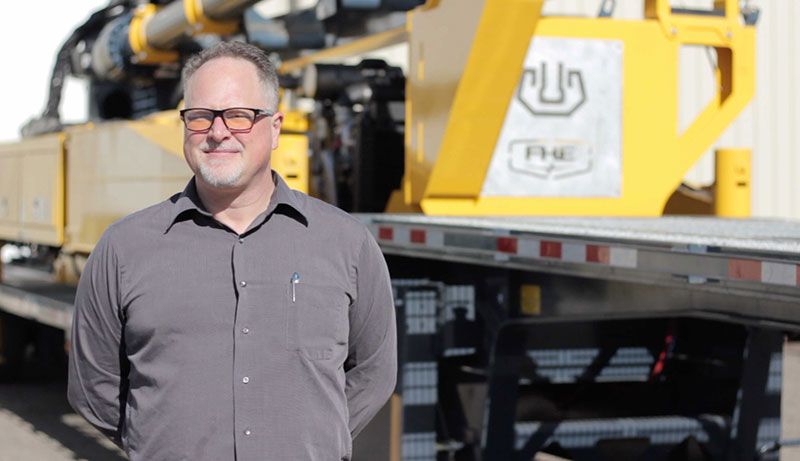
The U.S. Energy Information Administration attributes the recent domestic boom in crude oil production primarily to the growth of the hydraulic fracturing industry. The agency also reports that fracking now provides two-thirds of U.S. natural gas production.
As the demand for FHE equipment and services grow around the world, Kibler says he envisions that Onshape will continue to help his company improve their product development process.
“Onshape is our primary design tool, our primary share tool and it will continue to help us expand our vendor communications,” he says. “I’m a huge fanboy of Onshape. I was just at a college recruiting fair and showing graduates how you can pull up CAD models and edit them on your phone. Onshape really is the next generation of what CAD can and will be, and is leading the way for what collaborative design software looks like.”





